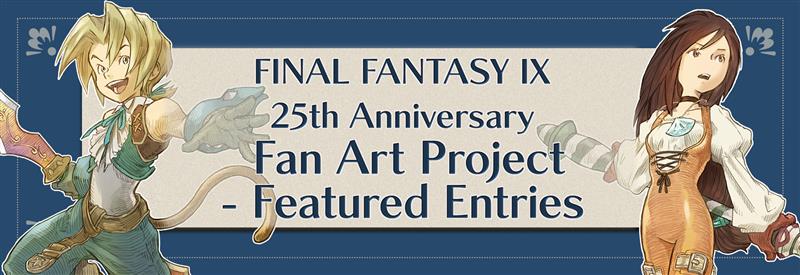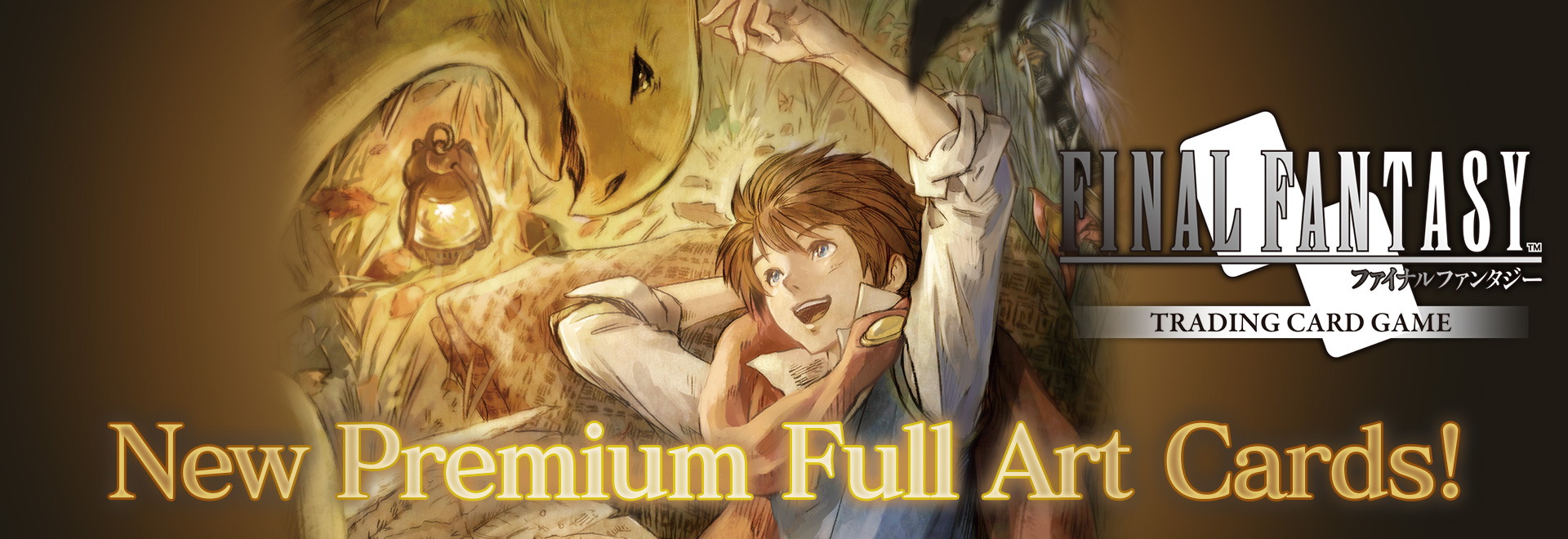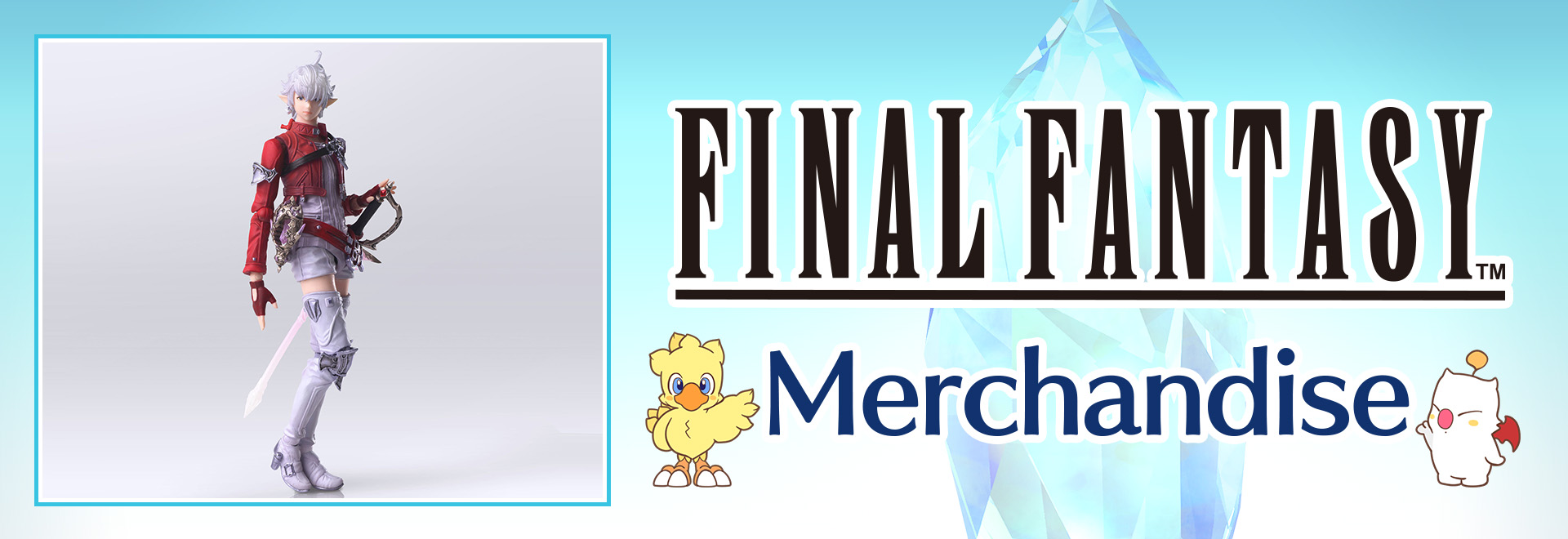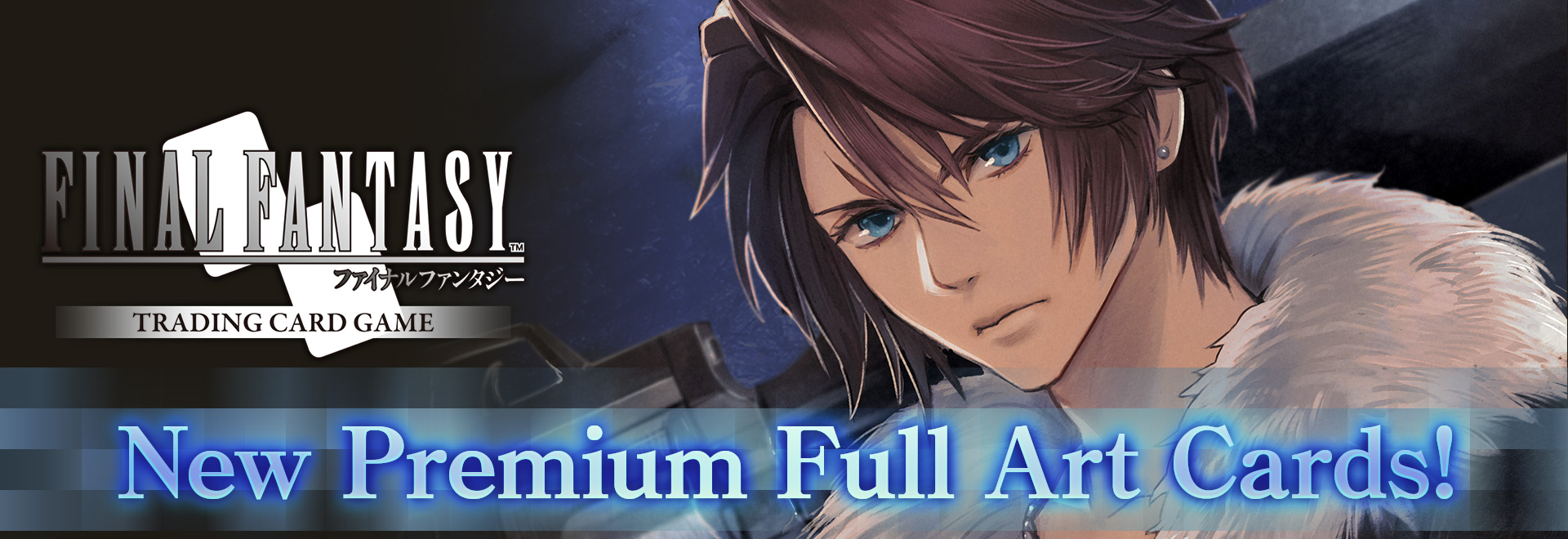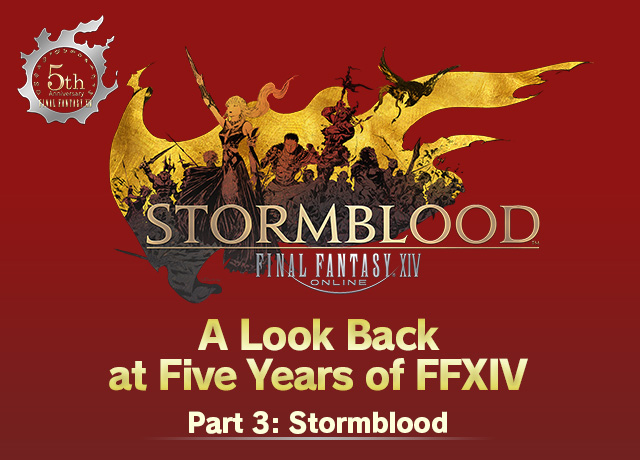
In this three-part symposium, core members of the FFXIV team discuss the development of the game over the past five years, focusing on A Realm Reborn, Heavensward, and Stormblood. In this final installment, we examine the release of Stormblood, as well as the current state of the game and what the future holds.
A Look Back at Five Years of FFXIV, Part 1: A Realm Reborn
A Look Back at Five Years of FFXIV, Part 2: Heavensward
Participants
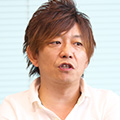
Naoki Yoshida
Producer & Director
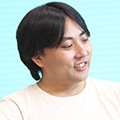
Banri Oda
World Lore Creator & Main Scenario Writer
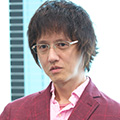
Masaki Nakagawa
Battle Content Designer
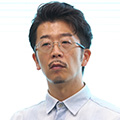
Yusuke Mogi
Lead Character Concept Artist
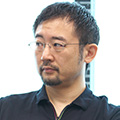
Hiroshi Minagawa
Art Director
- Player Response to Stormblood: Exceeding All Expectations
- The Origins of Stormblood’s Japanese Aesthetic
- The Eureka Expedition: A Tribute to Classic MMORPGs
- New Job HUDs and Further UI Refinements in Stormblood
- The Character Design of Stormblood: Beast Tribes, Primals, and More
- From Extreme and Savage to Ultimate: Pulling Out All the Stops
- Five Years of A Realm Reborn, and Beyond: A Message from the Developers
Player Response to Stormblood:
Exceeding All Expectations
―The player response to Stormblood was nothing short of overwhelming, with record-breaking numbers of concurrent connections. To what would you attribute this success?
Yoshida: The response to Stormblood, quite honestly, exceeded all of our expectations. Of course, all of us on the team were committed to delivering a quality expansion. That said, it wasn’t as if we were adding new races, and the only new jobs were two DPSs [offensive roles], so I figured that the best we could hope for would be a response similar to Heavensward. Furthermore, gamers these days are more into mobile games that can be played in short bursts, and time-consuming MMORPGs are harder to fit in their schedules—this is something I’ve felt more and more overseeing the daily operations of the game. In that sense as well, the incredible response was a genuine surprise. As for why it happened, some people ask me if it’s thanks to the TV series Dad of Light, or because Teru from [the Japanese rock band] GLAY started playing, but these would only affect the Japanese market. Stormblood brought in a huge number of new players from overseas. Looking at it in that light, I can only say that the true cause must be something we on the development team can’t see—something beyond our control. Something like word-of-mouth among our players, or just everything we’ve built up little by little since the early days of A Realm Reborn. Those sorts of things came together with our plans for this expansion, and the result was a chemical reaction we never could have predicted. However you want to put it, I feel that something extraordinary happened.
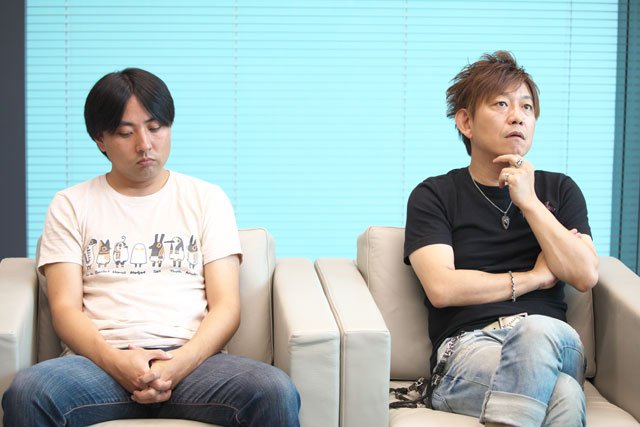
Nakagawa: Each time I approach a new expansion pack, I do so with the goal of outdoing the previous one. With Stormblood, I feel like we had something really solid from the earliest stages of development. That said, I never expected those record numbers, so that really caught me by surprise. I think the team has put a lot of hard work into the game since A Realm Reborn, that we’ve grown in the process, and that Stormblood is the result.
Oda: Up until now, there was a culture with online games where if a player quit once, they were typically gone for good, but we designed FFXIV to be a game that players could come back to even after taking an extended absence. Even players who took a break from the game back during Heavensward, for example, could easily come back and take on the new content in Stormblood. This cycle of sorts has become entrenched, and I think that played a role. I also have a feeling that those players who came back for Stormblood brought along new friends. As a developer, I’m glad we made FFXIV a game that was easy to return to.
Yoshida: That was one of our main concepts in creating A Realm Reborn—to make a game that was easy to come back to. MMOs require a huge time commitment for players, and in that sense, we’re competing against all other forms of entertainment. So it was important for us to make it so players could take a break and then come back again.
Minagawa: After all, we want to play other games from time to time, too. [laughs]
Yoshida: Even with a great television series, if that’s all I’m watching, I get sick of it sooner or later. I think it’s easier to appreciate a good series if I take a break and watch something else between seasons.
The Origins of Stormblood’s
Japanese Aesthetic
―Stormblood introduced two new DPS jobs—red mage and samurai—both of which have a long history in the FINAL FANTASY series. In particular, samurai brings with it a Japanese flair that we haven’t seen much of in FFXIV to date. What was behind the decision to include this aesthetic in Stormblood?
Mogi: Since the days of FFXI, players have been clamoring for the land of Hingashi to appear as a playable area. Yoshi-P gave the order that he wanted to create Eorzea’s version of Hingashi, and Stormblood was when that came to fruition. That said, a “Japanese” aesthetic can take many forms, from something truly Japanese, to the Japan-esque aesthetic that people abroad picture. So we discussed with Oda and the other writers what we wanted to go for, and we came to a decision.
Minagawa: To determine the scope of the Japanese feeling we were going for, I started out by envisioning and drawing extravagant, eye-catching structures like Ryūgū-jō [an undersea palace from Japanese legend]. I drew the extravagant, pointed elements and then the surrounding areas, adjusting as I went along and taking care that it was neither too ordinary nor overdone.
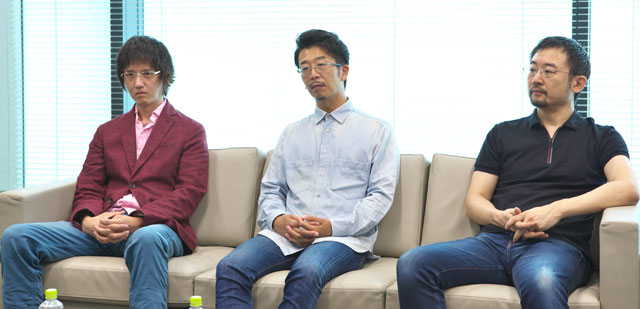
―How did you envision Doma and the Far East from a lore creation standpoint?
Oda: Foremost in my mind was that I didn’t just want to create a simple replica of Edo Period Japan. With Ishgard, while it has a medieval European atmosphere, it’s not as if it has buildings or culture lifted directly from actual history. Ishgard has its own background—the war with the dragons—and this is reflected in the cityscape. Likewise, the lands of Doma and Hingashi are Far Eastern nations that exist on the planet of Hydaelyn, and so I set out to give them their own unique history.
Mogi: When I heard we were doing samurai, at first I pictured the armored warriors from FFV. But Yoshi-P preferred the simple, kimono-clad look, and so we ended up with a cultural and visual aesthetic that reflected this, with the majority of NPCs dressed in kimonos. From this, the scenery of the towns also came together. Still, I really struggled with how to best fit these kimono-clad samurai into the world of FFXIV. If you don’t add a certain flair, they come off as too dull, but if you do too much, it turns into something else entirely. So I thought about what I could add to convey the intended aesthetic and catch the player’s eye—like the dragoons from Heavensward—and eventually settled on what you see in the game today. It was as a result of this process that red emerged as their defining color.
―What were you going for in choosing kimono-clad samurai over armored ones?
Yoshida: I wasn’t going for anything in particular—rather, that’s just how I’ve always pictured samurai. I enjoy the films of Akira Kurosawa,* and his samurai are always dressed that way. I think of armored warriors more as shogun or warlords, rather than what we would call “samurai.” For our international audience as well, I figured kimono-clad samurai would feel more natural to them. That might not be true for longtime FF fans, but I was also hoping to appeal to the masses and draw in large numbers of new players as well. They say Kurosawa’s films were a big influence on Star Wars as well, with the Jedi wearing lighter garb and carrying a single weapon. Clearly, they’re modeled after samurai—they can take on anyone with no armor and just a single sword. I figured this was the sort of samurai that would appeal most to our players.
Oda: Of course, we know there are fans of extravagant armor out there, so we tried to strike a balance with the design of the Genji armor series and other equipment.
Yoshida: As far as armored samurai warriors, I think it wouldn’t be out of the question to introduce them later on, as players venture deeper into the land of Hingashi. Although we won’t be doing anything like that in the 4.x story, you just might see them as we travel to other nations in the future.
*Japanese director famous for The Seven Samurai and Ikiru, among other cinematic classics. A legend both in his native Japan and abroad, he has influenced and earned the respect of countless individuals in the world of film.
The Eureka Expedition
A Tribute to Classic MMORPGs
―You spoke before about your concept of what an MMORPG should be. Patch 4.25 introduced the Eureka Expedition, which hearkens back to the MMORPGs of years past.
Yoshida: Yes, we created Eureka to allow players to relive certain elements of classic MMORPGs. Nakagawa was the lead director on this one.
Nakagawa: We designed Eureka so that players who had never experienced classic MMORPGs could enjoy things like forming parties to level up, and MMORPG veterans could feel a sense of nostalgia for the good old days.
Yoshida: Ever since Patch 3.1 and the Diadem, people have been asking for more exploration-type content—not just our players, but development team members as well. It’s a matter of taste, but the overall style of FFXIV doesn’t appeal to certain players. They say that there isn’t much sense of adventure, that the overworld areas are lacking something, or what have you. So we designed the Diadem, collected feedback on what worked and what didn’t, and then set out to make more exploration-type content. The end result is Eureka.
―Was there anything you took particular care with when designing Eureka?
Yoshida: The thing we debated the most was how much we wanted to preserve the essence of first-generation MMOs, right?
Nakagawa: How to assemble parties, whether there would be a penalty for dying—that sort of thing. We started out with a penalty system where players would lose experience or gil when they were KO’d, but halfway through, I changed my mind and thought we didn’t need this. But when I told Yoshi-P, he was insistent in saying there was no point to Eureka without a penalty, so I rethought this.
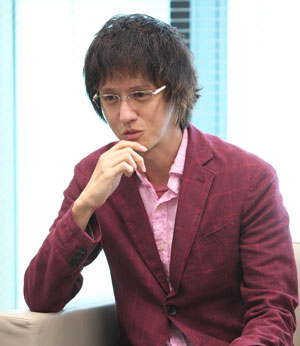
Yoshida: Without the stress and fear of a death penalty, you end up feeling that your actions have no consequences, and in that instant, it becomes a mediocre experience. So I said we couldn’t remove the penalty. This is the sort of thing where you can’t help but waver when you’re designing it. This goes for Nakagawa, too, but people who grew up on first-gen MMOs can’t help but think, “Can we really put players today through something like this?”
Mogi: We have all sorts of memories, after all. [laughs] That said, there’s no doubt that a death penalty adds a certain tension to the exploration process. Without it, you’d just pressing forward and forward like some kind of zombie.
Oda: For the first time in forever, you’re tiptoeing around the edge of the map, thinking, “Can I make it through here? Can I?” all the while avoiding the monsters’ gaze. Then they see you, and bam—it’s over. [laughs]
Minagawa: I see everyone using shouts, calling for someone to raise them, and think, “Right, right, this is what it was like.”
Nakagawa: I was really glad that Eureka brought back this culture of people communicating by shouts.
Minagawa: I feel we were able to the preserve these elements of classic MMOs and set them nicely into a modern RPG system.
Yoshida: Even so, we took out a lot of elements we felt were too extreme. Real first-gen MMOs took it way further than this. [wry grin]
―In addition to being an homage to the MMOs of the past, Eureka allows players to experience a tale of the Sharlayan Archons, set on the supposedly lost Isle of Val. What was behind the decision to use this location for Eureka?
Yoshida: That was my crazy idea. [laughs] The disappearance of the Isle of Val was written into the main scenario by Maehiro way back when, so I was always thinking, “It just disappeared? We have to explain this sooner or later.” So I decided to finish the story here. I didn’t care what happened to the isle, I just said, “Make this the Isle of Val.” [laughs]
Oda: Also, we couldn’t bring the elemental rules of Eureka into the surrounding areas, so it had to be a completely isolated environment. These things came together, and as a result we ended up building the story around the Isle of Val. The lore about the Sharlayan Archons wasn’t quite substantial enough to work into the main scenario, so I think it worked out for the best that we were able tell this tale with something on the scale of Eureka.
Mogi: And the quests work differently than normal, and are more difficult. Like, your destination isn’t shown to you...
Yoshida: With that, it looks as if you’ve accepted a quest in the field area as usual, but in fact, it’s taking place inside something like an instanced dungeon or an alliance raid.
Minagawa: We had to do some tricky stuff with the UI [user interface] display. I told them, hey, don’t look at me if any bugs show up. [laughs]
Yoshida: It was really tough to check. I’d be playing alone at night, and there was no one in Eureka, so even if I knew where to go for the quest, I’d be like, “How am I supposed to get there?” [laughs] I could use a debug command to make myself invincible, of course, but that defeats the whole point of the check, so I died over and over along the way.
Minagawa: It asks you to go to some really difficult places.
Yoshida: You have to be really careful...that, or go when some other person has the enemies’ attention. Then you’re like, “Sorry, sorry!” [laughs]
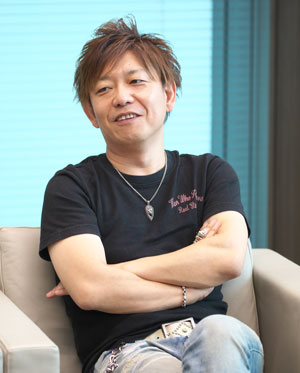
New Job HUDs and Further
UI Refinements in Stormblood
―Eureka features its own special UI. Stormblood also introduced a number of UI refinements, in particular the job HUD [heads-up display]. Tell us more about how this came about.
Yoshida: It started when the battle team came to me and explained that they felt there were too many things to keep track of, and they wanted to clean things up and make it easier to visually process. All jobs basically have to pay attention to DoTs [damage over time], cooldown [ability recovery], procs [random bonuses], buffs [enhancements], and debuffs [enfeeblements]. It’s one thing if you’re a veteran, but it can be intimidating for players who are just starting out. To fix this, we figured we had to organize things together with dedicated job UIs and HUDs.
Minagawa: By the time it came to me, Yoshi-P had already decided that we needed dedicated job HUDs. A number of new actions were added in Stormblood, making it difficult to manage on a controller, and this was a way to streamline that as well. Up until then, we had designed the actions, buffs, and debuffs in an extremely systematic manner, so while there was a lot of versatility, they weren’t particularly unique. Now, the team had more experience under their belts, and we thought they’d be able to design something that brought out the individuality of each job a bit more. So the Job and UI teams worked together and built the job HUDs.
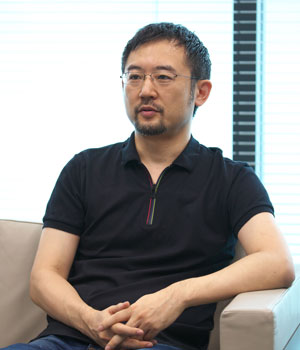
―Were any jobs particularly challenging?
Minagawa: Black mage was the one that required the most do-overs.
Yoshida: Black mage is always using multiple resources, and you have to learn different timings depending on your level, so it was difficult to find a single motif where we could organize all these things together. With summoner, too, Bahamut has that big chest, so we kept tweaking his posture to get the design just right.
Minagawa: For dragoon, the dragon’s eye looked different from how it does now. We debated how much the eye should open at each stage, and so forth.
Yoshida: “At stage zero, can’t the eye just be closed?” That was a discussion we had. On the other hand, the tank jobs all went smoothly. It was just a matter of switching stances and putting the resources they need to save up in the form of a gauge.
―How about the other UI refinements made, aside from the job HUDs?
Minagawa: I’m glad we were able to introduce the new main scenario guide UI. Earlier, we were talking about how FFXIV was designed to be an MMO that was easy to come back to, and so we were always thinking about how best to show players just what they needed to catch up. That said, we really asked a lot of the quest team with this one. [laughs] If there was even the slightest bit of mistaken information, there’d be no point to it, so fine-tuning this was quite a task for them. Also, though we quickly decided on how it would look and where we would put it, deciding on just what information we should include wasn’t quite as easy. For example, should we include job quests and unlock quests? If the UI keeps telling you to do this, then do that, players who just want to move on are going to get exhausted. In the end, we settled on a relatively simple approach which includes just the main scenario and job quests.
The Character Design of Stormblood:
Beast Tribes, Primals, and More
―Could you tell us more about the design choices behind the beast tribes and primals that appear in Stormblood?
Oda: Our rule is that we introduce two new beast tribes with every expansion. Each time, I figure out with Yoshi-P what direction we want to take, then ask our designers to bring these new characters to life. Stormblood would take players to both Gyr Abania and the Far East, so we decided to add one beast tribe for each region. We were also going to introduce swimming for the first time, so we knew we wanted to feature the ocean with one or the other. We already had a fish-type beast tribe with the Sahagin, so we decided to go in a different direction, and the turtle-like Kojin were born. For the other tribe, we wanted something that would evoke a connection to monsters already in the game. So we took inspiration from the snake-woman-like lamiae and created the Ananta.
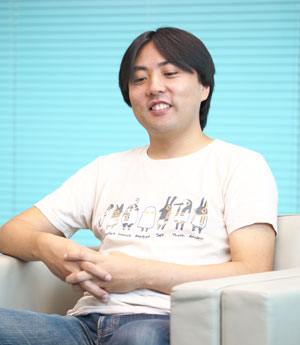
―Patch 4.3 introduced the Namazu beast tribe quests. How did that come about?
Oda: The Namazu were first created as ordinary monsters, and there was no plan to make them into a beast tribe. But I took a particular liking to the design, so we ended up giving them a bigger role. [laughs]
―Do you come up with the lore behind the beast tribes and primals all at once?
Oda: Yes, we usually come up with them together. When we started putting together the main scenario, we held a sort of “scriptwriting retreat.” Yoshi-P, [main scenario writer Natsuko] Ishikawa and I holed up in a rented meeting room in Tokyo for three full days and came up with the overarching plot and main storylines for Stormblood. In the process, we considered the beast tribes and thought, for example, these turtle people who live undersea probably would worship this sort of god, and so forth.
―And then how are these ideas transformed into concept art?
Mogi: First of all, we just bounce around a lot of ideas. What’s their visual motif, what sort of primal do they worship—even things as simple as their name or individual words help push the creative process along. As time passes, we get more and more information, and we use that to fine-tune our designs and polish them into a finished product.
Oda: For the beast tribes introduced between major expansions, we even held a competition and recruited design ideas from other departments.
Mogi: We welcome the participation of anyone with ideas—not just artists—and do our best to pick out good ideas so they don’t get lost in the shuffle.
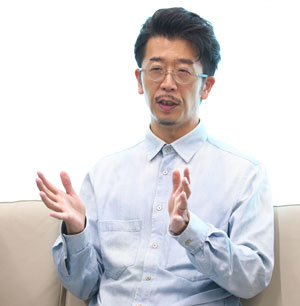
―At what stage do you decide on the primals’ battle mechanics?
Nakagawa: Sometimes it happens from the concept art stage, while other times we only start after the character models have been completed.
Yoshida: That sort of thing is handled on a case-by-case basis, depending on the schedule. There are times when we know what sort of attacks or gameplay features we want to add, and ask the lore team to make adjustments for that. On the other hand, there are times when we need to decide on certain things in advance, and so I ask the team to build around what the lore team has already come up with.
Nakagawa: It’s not that one approach is necessarily better than the other.
Mogi: It depends on the situation. There are times I’m in the middle of drawing a monster, and someone tells me, “We want it to have this kind of attack, so give it four arms.” After turning in my work, I always get great feedback from both the lore teams and the battle teams. This makes me want to do more and more to meet their requests, but in the end we only have so much time, so I tell them let’s just go with this. [laughs]
Oda: Take Susano, for example. From the lore team, we put in an order saying that he had to be holding three relics, and that he was a god of the sea and storms, and the art team went to work. The battle team came up with the idea that he would grow in size and swing his tremendous sword down from above. The lore and scenario teams then picked up on that idea, thinking that if he has that sort of impressive-looking attack, he’d also be a god with a booming, powerful personality. In that case, let’s also make his animations in cut scenes more extravagant...and so forth. Each team contributes something to the core concept.
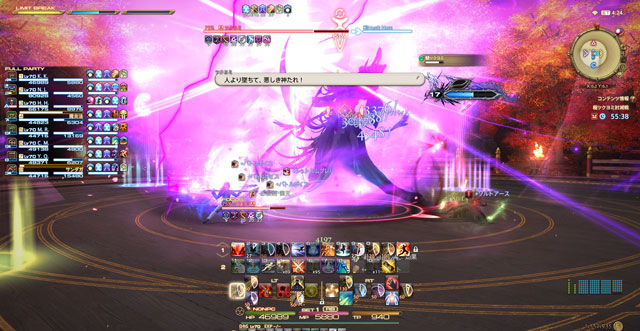
―Speaking of this collaboration between the lore and battle teams, I felt like Tsukuyomi was a great example of that.
Mogi: Yes. The concept for Tsukuyomi was incredibly clear, so I had no trouble at all coming up with the art.
Yoshida: Quite a few of the battle team’s ideas were implemented as well.
Nakagawa: We held a competition to recruit ideas, had rough sketches drawn for all of them, and then held a meeting. In the end, we decided on the theme of the dual nature of the two Yotsuyus—one with her memory intact and one without—and asked the artists to come up with something based on that.
Yoshida: When the design came to me, however, it gave me a bit of a headache. I remember thinking, “How in the world are we supposed to market this?” [wry smile] It’s a great concept, but it was so over-the-top that it looked like a villain out of an old-school monster film. It’s my job to check the art, send things back if necessary and have them finalized, so I thought of what could be done to tone things down a bit. In the end, I think we were able to preserve the impact, and players cooperated by not spoiling anything. This spread by word of mouth, and I think it was a real success from a PR standpoint in the end.
Oda: We also discussed who to bring out as Yotsuyu’s hallucinations. “Is it really okay if we beat up on Tsuyu’s mom and dad?” “Considering Yotsuyu’s mental state, we kind of have to, right?” “But aren’t they just going to look like an ordinary old man and woman?” These were the kind of things we talked about.
Yoshida: Don’t worry. As far as the Warrior of Light is concerned, if someone shows up in a boss fight, they’re fair game, no matter what they look like. [laughs] In the end, it’s not like anyone had any snarky comments like, “I’m supposed to beat up these senior citizens!?” It turned out pretty much as everyone conceived it. The only thing I changed was the battle dialogue.
Nakagawa: That kind of changed the mood of the battle.
Yoshida: At first, she didn’t talk about inflicting pain on herself. But deep inside, Yotsuyu already feels intense regret for her actions. And so I thought framing the battle as having to stop her from hurting herself would give the player more motivation to save her. It would also call back to Gosetsu’s line when he says, “Tsuyu, you must survive.” That’s really all I changed. I think everyone really understood and sympathized with Yotsuyu, and by extension Tsukuyomi.
From Extreme and Savage to Ultimate
Pulling Out All the Stops
―Patch 4.11 introduced a heretofore-unseen level of difficulty to the Unending Coil of Bahamut. Can you tell us more about this “Ultimate” series?
Nakagawa: The motivation behind it was really quite simple. With 3.x, when we introduced Alexander (Savage) in the even-numbered patches, our team came to a shared consensus that that was the appropriate level of difficulty for an eight-person raid. But that meant that our hardcore players would have nothing to do in future odd-numbered patches. So we decided that we needed to up the difficulty to provide a challenge for those players.
―How was the response, and what sort of feedback did you receive in the process?
Nakagawa: I’d say things pretty much went according to plan. If it took any longer to complete, we thought it’d be too stressful.
Yoshida: Coil was the first in the series, and it’s also the longest battle. If Ultima Weapon took as long, I think it would have taken more time for players to figure it out, but the battle designer in charge was able to tweak the level of difficulty to be just right. It’s always interesting to watch how players trying to be the first in the world to beat a new battle approach them. One team was lagging behind, but they were able to pick up hints from another player’s stream, and in the end, they were the first to emerge victorious.
―On release day, there was this mood among the players, like, “Isn’t this too easy?”
Yoshida: All of us on the team couldn’t help but grin watching that... [laughs]
Oda: Everyone had Twitch up on their second monitor as we were working.
Yoshida: We were like, “They’re saying it’s easy!” “Well, yeah, if you don’t wake it up...” The next day, I saw the players’ utter despair when they realized they needed to trigger the Awoken phase, and I thought, “Our battle designers must be on top of the world right now.” [laughs]
―Where did the idea for the puzzle-solving sort of battle mechanic come from?
Nakagawa: That came from the battle designer in charge of Ultima Weapon (Ultimate). He suggested it, saying he’s always enjoyed that sort of thing, and it ended up getting implemented according to his vision.
Yoshida: This is the same planner who designed turns 1, 2, 4, and 5 of the Binding Coil. He also did Twintania, and ever since then, he was trying to design a mechanism where the location of the neurolinks you destroyed in the beginning becomes important in the end. According to him, he wasn’t able to completely realize his vision, so this time he wanted to make it perfect. This time around, players found an unexpectedly easier pattern for the Garuda phase, but aside from that, everything turned out exactly as we expected, as if there really was no other method to succeed in the battle. Even watching it from a developer’s perspective, I just can’t help but be impressed with the design. It’s like admiring a perfectly executed math problem.
Five Years of A Realm Reborn, and Beyond
A Message from the Developers
Minagawa: During the development of A Realm Reborn, there was sense of do-or-die—a feeling that our team was responsible for turning things around—that motivated us. With Stormblood, the game’s been running for a few years, so we have more and more members of the development team who started out as players and joined us midway through. These people just genuinely love FFXIV, and they’re always getting all starry-eyed about what they want to create. [laughs] When I go to them and say, “Up until now we’ve done things like this—what do you want to do?” they come up with all sorts of suggestions. Now, we try to work in as many of these new ideas as we can, and I think as a result, the game has really come into its own and flourished. I think we’ll be able to add even more variety in the game in the future. I’m looking forward to it, and I hope you are too.
Mogi: I joined the team with Patch 3.1, so I didn’t really experience the development struggles that happened before that. Perhaps because of this, I settled into the FFXIV environment quite easily. That said, since joining the team, I’ve had less and less time to experience FFXIV as a player, so going forward I’m hoping to devote more time to that, so I can experience the game along with all of you. I’ve been playing MMORPGs since even before the so-called first generation, so I look at Eureka—with no player killing or item stealing—and think, “This is nothing.” [laughs] I’m looking forward to creating even more and better art for the next expansion, and hope you’ll enjoy it.
Nakagawa: I’ve had the pleasure of designing battles for A Realm Reborn, Heavensward, and now Stormblood, and the battles have really grown more expansive and complex along with the game’s development. For example, the primals back in A Realm Reborn only had about ten actions, but now some of them have as many as fifty. It takes more effort to develop and animate of course, but along with that, the quality keeps going up. Going forward, I want to create more interesting battle mechanics, as well as add more content like Eureka and the deep dungeons. We still have so many ideas we want to implement, so I hope you’ll stick with us and see what’s to come.
Oda: Having been on the team since the 1.0 days, through A Realm Reborn and Stormblood, I feel like—in terms of the quests and the storytelling—Stormblood is where the overall direction we’re going has really started to come into view. But once a certain approach takes hold, you also run the risk of both the developers and players falling into a rut. And so we made an effort to do new things, like allowing the player to control Alphinaud in Patch 4.3. This year marks the fifth anniversary since the rebirth of the realm, and we’re hoping to do even more new things in the future. In terms of lore as well, there are many stories still untold, and we want to take players to new frontiers and locales in the future. With FFXIV, I feel that the relationship between the developers and the user base has really matured—though we get positive feedback as well, we also get harsh opinions and highly constructive criticisms. Developing an MMO is really a joint effort between the development team and players, and I hope we’ll be able to reflect more and more of your feedback in future updates.
Yoshida: The team really gave their all to create Stormblood, and I think you can really see how they leveled up in the process. As producer and director, this makes me incredibly happy, and I’m truly grateful to everyone. To be honest, there were times when I wasn’t sure just how far we should expand FFXIV. But the response to Stormblood put things into perspective, and now I feel that if we’ve come this far, we might as well take it as far as we can go. Because of this, I think we’ve really upped the stakes in the 4.x patches. Now that we’ve hit the five-year mark, I want to deliver even more surprises for players to enjoy as the story moves forward. I think that’s what FFXIV is all about. I’m thrilled that we can celebrate our fifth anniversary, and I feel like it marks the beginning of our next stage. We’re going to keep going on full speed ahead, and I hope you’ll continue to support us in our efforts!
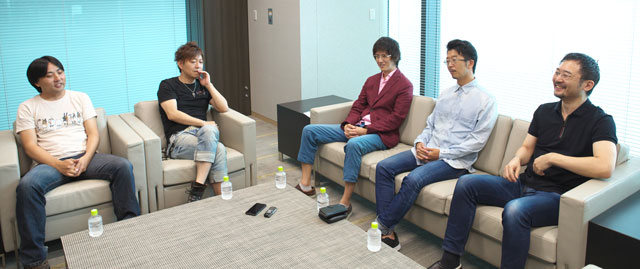
This article was originally published in the FINAL FANTASY® XIV: Official Magazine – 5th Anniversary Edition, which went on sale in Japan on October 18, 2018.


